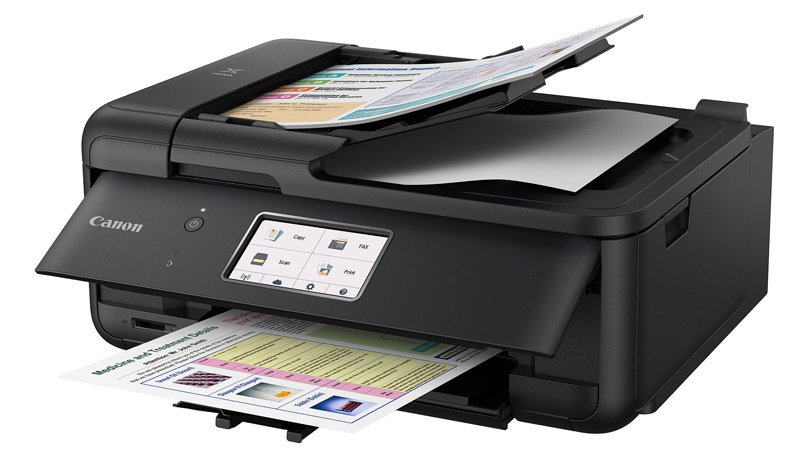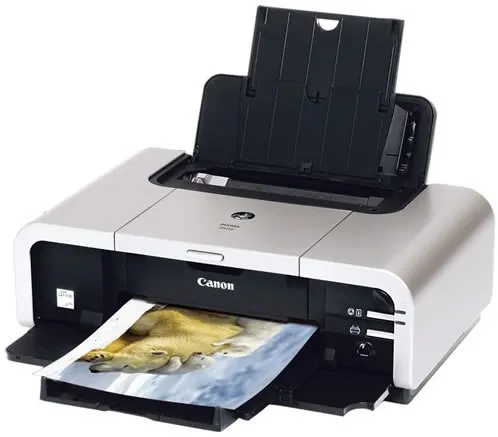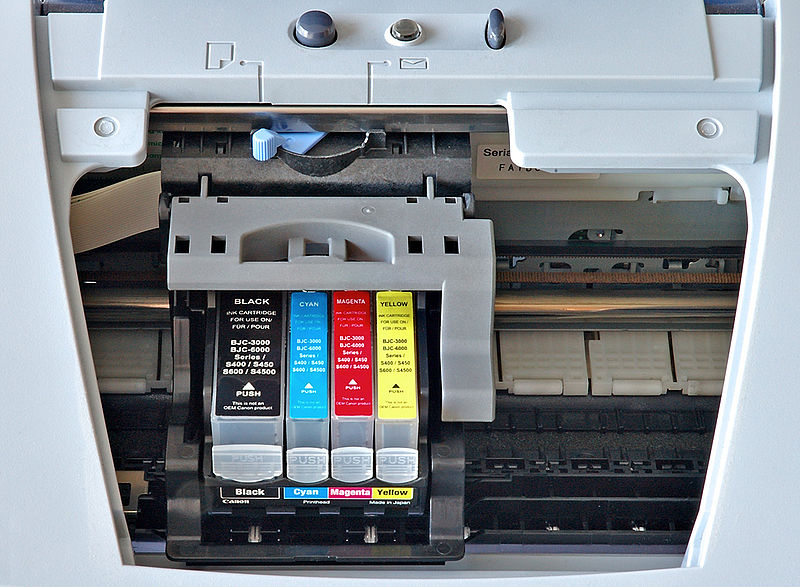
Inkjet printers are the most popular choice for home printing needs, and since their introduction in the second half of the 1980s, inkjet printers have grown in popularity and performance while prices have dropped significantly. These printers work by propelling droplets of ink onto the paper, whereas laser printers use toner and are primarily used for high-volume printing in office environments. Let’s take a closer look at how inkjet printers work.
What Is an Inkjet Printer?

Inkjet printers are peripheral devices that connect to a computer wirelessly or by cable. At home, it receives files or images from a computer and prints them on adhesive or high-quality photo paper. In the case of a wireless printer, anyone in the household can print to the printer from a wireless device, as long as both are on the same home network.
Inkjet printers perform best on non-porous paper, so a slightly heavier bond paper is needed, which is usually 24 lbs in the office, not 20 lbs. Paper explicitly specified for use in inkjet printers has a hard surface that prevents color bleeding. This paper is slightly more expensive than regular office copy paper. High-quality photo paper is also made for inkjet printers, but it is more expensive than adhesive paper.
Inkjet printers are known as all-in-one printers that are equipped with scanning and copying capabilities in addition to printing. These two options are done directly on the printer, as on a copier, usually by placing the document face down on the glass area.
Characteristics of an Inkjet Printer
Most home inkjet printers are inexpensive, relatively small, and lightweight. Commercial-quality inkjet printers are larger, more expensive, and print a wider range of materials.
The speed of an inkjet printer is usually measured in how many pages per minute are printed with only black ink and how many pages per minute are printed in color. Different printers have different speeds, but many models are typically rated at 10.5 pages per minute (black ink only) and 5 pages per minute (color ink). Commercial inkjet printers are faster and more expensive than small home printers.
Most home inkjet printers handle standard letter and legal-size paper. A subclass of inkjet printers, dedicated photo printers are smaller and designed only for photos, not documents. Available in 4×6″, 5×7″, and other sizes.
Inkjet cartridges are relatively expensive. It’s not uncommon for the cost of consumables to exceed the cost of the printer in a year, depending on usage. If you’re buying a new inkjet printer, estimate the printer’s cost per page before buying.
What’s Different About Inkjet Printing?
Inkjet printers are actually an evolution of dot matrix printers. Instead of metal needles, they used hundreds of small spray guns to dot the paper with ink. The characters they print are still made up of dots, like in dot matrix printers, but the dots are so small that you can’t see them. Different types of inkjet printers burn ink in different ways. In Canon printers, the ink is burned by heating, causing it to explode into the paper in the form of air bubbles. That’s why Canon sells printers under the “Bubble Jet” brand. Epson printers work a little differently. They use an effect called piezoelectricity. Tiny electrical currents, controlled by the printer’s internal circuitry, vibrate the tiny crystals back and forth, jetting ink while doing so. You can simply think of an inkjet printer as a firing squad of nozzles that shoot out millions of dots of ink on the paper every second!
What Are The Main Parts Of An Inkjet Printer?
Open the front of the printer and you can clearly see all the important parts:
- Plastic gears, driven by stepper motors, turn the rollers to move the paper through the printer.
- A flexible ribbon cable transmits printing instructions from the electronic circuitry inside the printer to the moving ink cartridges. (Inkjet printers contain circuitry that translates computer instructions into precise movements of the print head. The electronic bits and Bob are not actually visible in this photo. There is usually a single large circuit board in the printer on which all the components are mounted, including the control Switches, LED lights, and various connections to the printer mechanism and power supply.)
- Plastic and rubber rollers hold the paper tightly, allowing it to move through the printer with absolute precision.
- Sturdy metal rails guide the printer head as it moves back and forth.
- Spike wheels on the front of the printer help hold the paper firmly and move it precisely.
- The print cartridges print from left to right, then reverse the print information and print right to left-back. This is called bidirectional printing, and it prints pages faster.
How an Inkjet Printer Works

Inkjet printers create images by ejecting tiny droplets of ink on paper. The printhead moves back and forth as the paper is fed through a set of rollers. A complete image is made up of many tiny dots, like the pixels on a TV or phone screen.
Image quality is determined by the dots per inch (DPI) the printer is capable of producing. Most laser printers have a resolution of 1200 dpi or 2400 dpi. Some low-end printers have a resolution of 300 dpi or 600 dpi. Lower ranges are acceptable for documents consisting primarily of text and everyday graphics. However, for high-quality photos, higher resolutions are preferable.
Yellow, magenta (red), cyan (blue), and black are commonly used ink colors in inkjet printers. Used in combination, these can replicate most colors. Each ink color is usually contained in a separate replaceable cartridge, but some models combine inks into a single cartridge.
Inkjet Technologies
Most consumer printers use a hot drop on demand (DOD) method to dispense ink. During this process, ink is pumped from the cartridge to a small reservoir just behind the nozzle. There is a small electric heating element in the reservoir. When the current pulse is passed, the solvent of the ink evaporates, causing the pressure to rise, which pushes a drop of ink out of the nozzle. The vapor bubbles then condense, contract, and draw more ink into the reservoir.
Large commercial printers use piezoelectric materials instead of heaters. In these devices, a piezoelectric diaphragm, similar to a small speaker, sits on the back of an inkwell.
The printhead contains nozzles, reservoirs, and heaters or piezoelectric elements. In many consumer printers, the printhead is part of a disposable cartridge, which means that the printhead is replaced whenever new ink is needed. Expensive printers use fixed heads.
Other technologies are present in large commercial inkjet printers, but not in home printers. These typically use a combination of ultrasonic vibrations and electrical charges to propel and guide the ink droplets in a continuous spray. This printer is faster and uses a wider variety of inks and dyes, including solvent-based and UV-curable inks and dyes. This results in a print that is more durable and waterproof than regular printers.
Other Uses for Inkjet Printing
An inkjet printer is a low-cost printer for printing photos and documents. However, commercial inkjet printing has a wide range of uses. It is used to print logos, billboards, T-shirts, and on food.
Hidden Cost of Inkjet Printing
Inkjet printers are very cheap; even all-in-one printers that have scanning and basic “copying” (both scanning and printing) built into the same machine are very cheap. Before you marvel at how much you get, take a moment to think about how printer manufacturers do it: their money doesn’t come from the printer, but from the inkjet cartridges that you will keep filling the printer forever (the so-called razor and blade business model). Considering that inkjet cartridges are nothing more than small plastic boxes with ink-filled sponges inside, they are very expensive. The printer itself seems to be designed to use as much ink as possible through an endless nozzle cleaning maintenance routine (each using a little more ink).
Final Words
When you’re shopping for a printer, be sure to check out detailed consumer reviews. Look for a model with refillable ink tanks or other ink-saving features; make sure it will accept cheap compatible ink cartridges to save you from buying expensive manufacturer originals, and (see if you can use ink bottles and syringes yourself Refill the ink cartridges. Print in draft mode if possible, and try to use ink-saving fonts.
